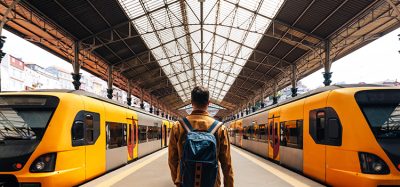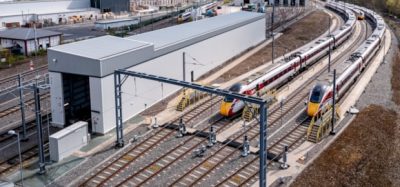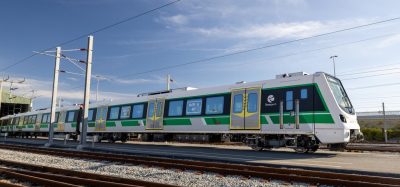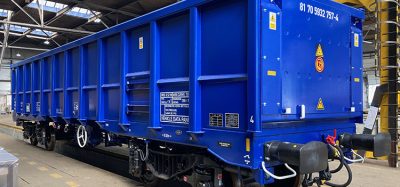The most modern fleet of high-speed trains in Europe
Posted: 26 September 2009 | | No comments yet
The year 2008 was the 160th anniversary of railways in Spain, which is all the more significant because now in the 21st Century, railways have clearly been modernised and this modernisation process will continue in the coming years. In accordance with the Strategic Infrastructures and Transport Planes (PEIT), prepared by the Ministerio de Fomento (Ministry of Public Works) and approved at a Cabinet Meeting on 15th July 2005, railways must play a central role in the Spanish intermodal transport system, for both passengers and freight, in order to respond to the citizens’ mobility requirements, to contribute to social cohesion, providing a backbone for the land and sustainability, because of the environmental advantages that railways provide.
The year 2008 was the 160th anniversary of railways in Spain, which is all the more significant because now in the 21st Century, railways have clearly been modernised and this modernisation process will continue in the coming years. In accordance with the Strategic Infrastructures and Transport Planes (PEIT), prepared by the Ministerio de Fomento (Ministry of Public Works) and approved at a Cabinet Meeting on 15th July 2005, railways must play a central role in the Spanish intermodal transport system, for both passengers and freight, in order to respond to the citizens' mobility requirements, to contribute to social cohesion, providing a backbone for the land and sustainability, because of the environmental advantages that railways provide.
The year 2008 was the 160th anniversary of railways in Spain, which is all the more significant because now in the 21st Century, railways have clearly been modernised and this modernisation process will continue in the coming years. In accordance with the Strategic Infrastructures and Transport Planes (PEIT), prepared by the Ministerio de Fomento (Ministry of Public Works) and approved at a Cabinet Meeting on 15th July 2005, railways must play a central role in the Spanish intermodal transport system, for both passengers and freight, in order to respond to the citizens’ mobility requirements, to contribute to social cohesion, providing a backbone for the land and sustainability, because of the environmental advantages that railways provide.
Commitment to trains
Without forgetting the conventional railway, Spain has clearly opted for high-speed, and by 2010 the country will be leading the world in the number of kilometres of high benefit lines and will have the most modern passenger rolling stock in Europe.
Planning the PEIT: general aims
The PEIT clearly establishes that, to provide a response to an increase in mobility, the reforms made in the transport sector needed to be planned, and the same importance had to be attached to the social, environmental and territorial objectives that were included as was given to the functional and economic aims. In view of this, the PEIT set four general aims:
- To improve the efficiency of the transport system
- To strengthen social and territorial cohesion
- To contribute to sustainability
- To encourage economic development and competitiveness
In order to achieve these aims, the PEIT gives railways a central role to interconnect the intermodal transport systems in Spain, for both passengers and freight. Therefore, the Government’s transport infrastructures and services policy towards railways was subjected to the following guidelines:
- To establish the new model set out in the European legislation, which separates infrastructure management from the management of the services
- To contribute to making the railway services accessible to the whole country
- To establish a high benefit network by developing new infrastructures
- To reduce the travelling time for all the interurban links so that the train can compete with air travel where distances of less than 700km are concerned, and with the car when the distances are less than 300km
- To significantly increase the freight railway share of the market
- To define a Spanish network strategy for interoperability with Europe through the incorporation of the UIC track width and to ensure that Spanish railways have the highest possible safety standards by implementing the ERTMS system
- To improve the railway’s integration into the urban environment by completing the suburban networks in the major cities and metropolitan areas, giving priority to the modernisation of the trains
- To jointly establish with the Autonomous Regions, a new framework for the regional services and to coordinate these services with the long-distance services
Programme contract and modernisation
Fruit of these strategies defined in the PEIT, the Administración General del Estado and Renfe signed the Programme Contract (2006-2010), which established efficient planning that was in keeping with the growth of the infrastructures, with a view to making inroads into the market share that would enable them to transport more than 600 million passengers and 30 million tonnes of freight by 2010, as well as to improve the management of a new framework of liberalisation and thus achieve an economic balance.
One of the foundations of this agreement is the clear commitment to the full-scale renewal of its fleet of locomotives and rolling stock.
Furthermore, the Programme Contract establishes the general lines that are to be followed by Renfe where managing its different services is concerned. A need for very frequent services has been established for passenger transport on long-distance services, through corridors providing great benefits, with train timetables that are well coordinated to facilitate changing to other services, as well as a transition to adapt them to the progressive commissioning of the new infrastructures, only made possible by having a fleet of high-speed and variable-width trains.
The high-performance infrastructure is also used for high-speed and middle-distance services.
Spain cuts distances thanks to high-speed
At the end of December 2007, the high-speed Madrid to Valladolid and Madrid to Malaga lines came into operation, and in February 2008 the Madrid to Barcelona line followed suit. This means that Spain now has more than 1,500km of network on which Renfe will be transporting, this year alone, 11.4 million passengers on long distance services and five million more on middle-distance services.
With the current network, almost 30 million people are already enjoying the benefits of high-speed rail links. Of these, 19 million live in provinces that have access to the 19 AVE destinations, whereas a further 11 million can use high performance trains that can run on traditional tracks or be adapted to the UIC gauge, with the consequent speeding up of travel times.
In 2010, Spain will be equipped with 2,200km of network, the longest in the world, and by 2020 it will reach everywhere in the country – 90% of the citizens will live within 50km of a station where the AVE stops.
Modernisation of locomotives and rolling stock
No less than 560 new passenger trains will have been put into service between 2004 and 2010, of which 265 trains will have been commissioned between 2004 and the end of 2009.
Between 2009 and 2010, 295 brand new passenger trains will appear on the lines, as well as 85 locomotives and 438 freight wagons. That is why UNIFE agrees that Spain’s fleet of motive power and rolling stock will be the most modern one in Europe by 20101.
To be specific, where high-speed is concerned, Renfe will have 231 trains, of which 96 will be given over to AVE services (high-speed and long-distance), 62 will be for Avant services (high-speed and middle-distance) and 73 given over to Alvia services (long-distance and suitable for running either on conventional tracks or UIC gauge tracks).
Purchasing plan: general criteria
As a result of all that has been stated above, a purchasing plan was prepared to renew the trains, and if followed accordingly, they should lead the country into having a fleet of trains that is as versatile and as adaptable as possible and with a sufficient response capacity to be able to cater for the important requirements of safety, sustainability and accessibility.
The fleet and investment
Spain will have commissioned 560 new of which:
- 63.4% are for use on Local and Suburban and Spanish standard track gauge services
- 18.4% for high-speed services, both long- and middle-distance
- 18.2% are high-speed and variable-width trains that use conventional tracks
Apart from this planning for passenger trains, Renfe has also purchased, for the first time in its history, 100 electric locomotives that have been specifically designed to haul freight trains, which amounts to a major qualitative breakthrough where power and reliability are concerned; the aforementioned also goes hand-in-hand with a complete redesigning of diesel locomotives and new freight wagons for the different products.
Spain has never before made such a major investment effort as it is making now to enhance the railways and their use. The overall investment figures for the period between 2004 and 2010 amounts to almost €6 billion. The amount allocated to adapting the rest of the trains for disabled persons must also be added to this figure, which amounts to nearly €300 million.
Variable-width trains
As part of the major expansion of the high-speed infrastructures, it was essential to provide new locomotives and rolling stock with variable-width facilities. This enables the new trains to not only run on the new high-speed lines but also the conventional lines, so that the advantages of high-speed rail links can be felt beyond the zones that are reached by the new lines.
This versatility can already be appreciated in connections between the centre and the north of Spain or between Galicia and Catalonia on board the 46 Alvia trains that have been in service since 2004. The fleet will be increased to 73 trains after the commissioning of 27 units between now and 2010.
Apart from the Alvia trains, the fleet of variable-width trains will be increased – a further 29 Avant trains will be added in order to increase the versatility of the middle-distance services that are provided by the high-speed lines.
High-speed trains
Along the same lines, this decisive expansion of the infrastructures has made it necessary to increase the number of high-speed trains running exclusively on UIC gauge lines. The recent commissioning of the high-speed lines to Barcelona, Malaga and Valladolid has made it possible to put part of this new fleet into operation.
Forty-two AVE trains have been in service since 2004, and a further 28 new trains will be joining them between now and 2010, so Renfe will be equipped with 70 new AVE trains.
At the same time, the first 24 AVE trains to run in Spain after the opening of the Madrid to Seville line in 1992 are being completely overhauled, with a view to increasing their useful service life after 16 years of excellent service. The AVE fleet will then consist of 94 trains in 2010.
Apart from these trains, 20 Avant trains entered service in December 2004, specifically designed for high-speed middle-distance services, and a further 13 trains of the latest generation are expected to follow suit at the beginning of 2009.
All trains accessible by 2010
Providing accessibility, facilities and benefits for the disabled is another characteristic that is inherent to the most modern train fleet in Europe, in accordance with Renfe’s Social Responsibility strategy. All the new trains will be fully equipped with all the facilities that are required to make them accessible for disable people, and they will be provided with the following:
- Access ramps
- Platforms between carriages and wider corridors
- Specially prepared places and
- Toilets that are adapted to the requirements of people who travel in wheelchairs
Renfe was aware of the fact that not only the new trains have to be fully accessible, but that the rest of the ones already running would have to be modernised. With a view to ensuring that by 2010 all trains will be able to transport disabled passenger comfortably, the company has prepared an Accessibility Plan that will ensure that in 2011, 90% of Renfe’s trains will be able to cater for persons with limited mobility, after making investments of almost €300 million.
All this effort is boosted by the fact that Adif is making its own efforts to make mobility easier on the stations and within the railway facilities.
In July 2007, and as a result of this collaboration between Renfe and Adif, a customer care service was implemented that was specifically aimed at the disabled.
An ongoing and immediate customer care service was set up in June 2008 in 68 stations throughout Spain, which means that the disabled can get personal assistance to get on and off trains.
Since the initiation of this ongoing and immediate care service, the number of persons being helped has risen sharply: in four months, the number of persons assisted has been three times as high as in the whole of the previous year.
High-speed trains
AVE S-100
A complete redesigning and modernisation of the interior is making it possible that, with an investment of €63 million, the old S-100 trains can also make their contribution to the modernisation of Renfe’s entire fleet of AVE rolling stock, which will be composed of 94 trains in 2010.
The AVE S-100, manufactured by Alstom, made its debut on 21 April 1992 on the Madrid to Seville line, where it still runs today, and it was the first high-speed train for UIC gauge in Spain. When it reached the halfway stage in its service life, a decision was taken to not only overhaul all the mechanical components of the rolling stock, but also to completely refurbish the interiors.
Latest generation technology and new materials have been incorporated. The carpeting on the floors has been replaced with mock-wood flooring that makes on-board maintenance, cleaning and service operations much easier; the design for the toilet facilities has been improved, also with new materials and lighting and facilities for changing babies have been provided. 220 volt electricity currents have been installed for all the seats, luggage facilities have been enlarged and flat television screens for videos have been fitted in all the coaches. A new place for disabled people has also been provided in one of the Tourist Class coaches.
The 18 units manufactured in 1992 will be joined in the coming months by the six that have hitherto been called S-101, which were equipped with Iberian gauge to run on the Euromed service, which will also be refurbished.
The series 100 can reach a maximum speed of 300km/h and has eight self-driven 3-phase synchronic motors and a 2-voltage power supply. These trains weigh 392 tonnes and are equipped with the LZB and ASFA signalling systems.
AVE S-102/112
On 26 February 2005, the AVE S-102 trains, constructed by the Talgo-Bombardier consortium, began to run on the Madrid to Zaragoza to Lerida line. The series will eventually be composed of 46 vehicles by 2010, after 30 new trains (which are referred to technically as the AVE S-112) have entered service, these latter trains having seating for a further 32 passengers on board.
The train, which can reach a maximum speed of 330km/h, is equipped with an automatic driving system based on modern signalling systems. It is made of a very light aluminium alloy, which means that energy consumption is lower and a braking system has been provided that recovers electricity and water is used instead of chemical substances to cool the latest-generation electronic equipment.
The train has eight 3-phase asynchronic motors and a power supply at 25 kV, as well as being equipped with an electric recovery brake. These trains weigh 322 tonnes and are equipped with the ERTMS, LZB and ASFA signalling systems.
AVE S-103
The AVE S-103, manufactured by Siemens, is equipped to reach a maximum speed of 350km/h and began commercial operation in 2007. There are 26 units, all of which have entered service.
The tractive effort of the train is distributed, that is to say that the traction equipment is shared out beneath the coaches, which makes it possible to make use almost the entire length of the vehicle for passenger seating accommodation and on-board services. This quality also allows for optimum use of the traction capacity because half of the axles are motorised.
The AVE S-103 is made of a very light aluminium alloy, which means that energy consumption is lower and the braking system is electric in the axle motors so it has been conceived as the so-called ‘mixed brake’, which allows for both rheostatic and recovery braking. The axle motors are also equipped with pneumatic brakes just like the bearing axles, which are provided with three disc brakes on each axle.
The trains have 16 asynchronic motors with a power supply at 25 kV; they weigh 445 tonnes, and are equipped with the ERTMS and STM signalling systems, which enable them to be compatible not only with the LZB but also the ASFA, the latter being used as a standby system.
Avant
Avant S-104
The Avant S-104 is the first train to have provided the high-speed service to middle-distance routes along UIC gauge routes. The CAF-Alstom consortium constructed the 20 trains in service, which began to run commercially in December 2004.
They can run at a maximum speed of 250km/h and they are very streamlined in appearance. The inside of the train has been designed to be as useful and ergonomic as possible, and as they are modular in nature, they are easy to assemble, repair and maintain. As the vehicles have been made of aluminium alloy, they are very light and extremely competitive where energy consumption is concerned, when compared to other trains that can travel at the same speed. The total length of the train is 107 metres and they are approximately 3 metres wide.
Avant S-114
The Avant S-114 is a development of the S-104 and the concept is similar – the maximum speed is 250km/h; the coach layout and the number of seats are the same, albeit with several technological improvements. Alstom is constructing the 13 units.
The new trains are currently undergoing standardisation and certification trials and tests and will come into revenue-earning service in 2009.
The new Avants feature traction, braking and running improvements, as well as comfort and information systems, plus audio and video; greater reliability and availability, improvements to the power consumption and lower maintenance costs and electricity consumption.
The train is of the fixed composition type, having four motorised coaches and the maximum speed is 250km/h. There is seating accommodation for 236 passengers travelling in the same class, plus one disabled person and the following signalling systems are fitted: ERTMS, STM-LZB and ASFA digital.
Variable-width
Alvia S-120
The Alvia S-120, manufactured by the CAF-Alstom consortium, came into operation in May 2006 on the Madrid to Barcelona route (between Madrid and Lerida on the UIC gauge and between Lerida and Barcelona on the conventional gauge) until the high-speed infrastructure was completed between those two cities in February 2008.
It was the first Alvia, a long-distance service that is characterised by its ability to run either on tracks with the Iberian gauge or tracks with the UIC gauge, thanks to the variable-width axle systems that the trains are equipped with. Twelve units are currently in service. There will eventually be 28 trains of this type.
These trains, the first self-propelled 2-voltage electric units can run at a maximum speed of 250km/h and do not have to stop to change track gauges. They weigh 252 tonnes when empty and they are equipped to run on lines that use the ERTMS, LZB and ASFA digital signalling systems.
Passengers get on and off the train through a door in the centre of each coach, provided with two semi-departments to the left and right of the central platforms, which serves to improve internal mobility. The seats can be made to face the train’s running direction.
Alvia S-130
This series of 45 trains, manufactured by the Talgo-Bombardier consortium, will come into service in 2010. Twenty-six of these trains will run at a maximum speed of 250km/h on high-speed lines and at 220km/h on the conventional lines.
Each one of the series units will comprise one aerodynamic locomotive at each end and 11 coaches with armchair seating that is distributed between Tourist Class (236 seats) and First Class (63 seats).
The seats are of the reclining type and have footrests; they can also be made to face the running direction. They are also provided with an electricity supply point for plugging in sockets and individual reading lights as well a sound system with four audio channels and two video channels.
Where technical matters are concerned, the trains in the 130 Series will be equipped with items of the latest generation of electrical equipment based upon 2-voltage IGTB technology for 3 Kv of direct current and 25 Kv for alternating current. They are made of alight aluminium alloy, which helps to make them less heavy on the vehicle, which at the same time leads to energy saving. The boxes that make up the wagons are airtight and sealed, in order to prevent the problems that are caused by pressure changes when the train is going through tunnels.
It has eight asynchronous motors, is 183.95 metres long, weighs 315 tonnes when empty, and is equipped with the following items of signalling equipment: ERTMS, LZB, ASFA and EBICAB 900. The latter is in operation along the Mediterranean Corridor, as well as in certain zones in Portugal.
Avant S-121
Avant S-121 are trains manufactured by the CAF-Alstom consortium and have a similar philosophy and design as the Alvia S-120 – from the same constructors, in order to cover middle-distance services. By 2010, there will eventually be 29 trains.
Each train is composed of four units, all of which are equipped with motors every train has seating for 280 passengers with one single class, plus one seat for a disabled person.
The variable-width axle system and its 2-voltage supply system means that the trains can run on UIC gauge tracks and Iberian width tracks. Both changes (width and voltage) take place automatically. They are also equipped with ERTMS, LZB and ASFA digital signalling systems.
The maximum speeds are 250km/h (UIC gauge) and 220km/h (Iberian gauge).
Reference
- SOURCE: “Worldwide Rail Market Study. Status Quo and Outlook 2016”. UNIFE, 2008







